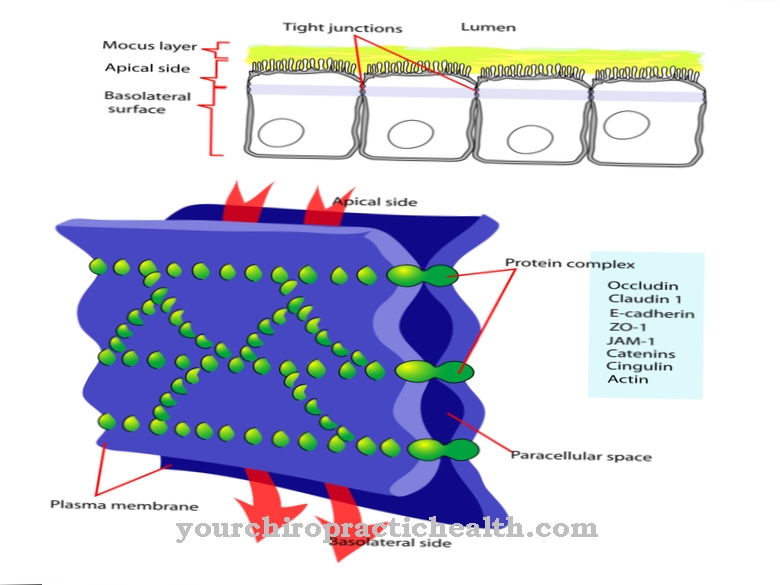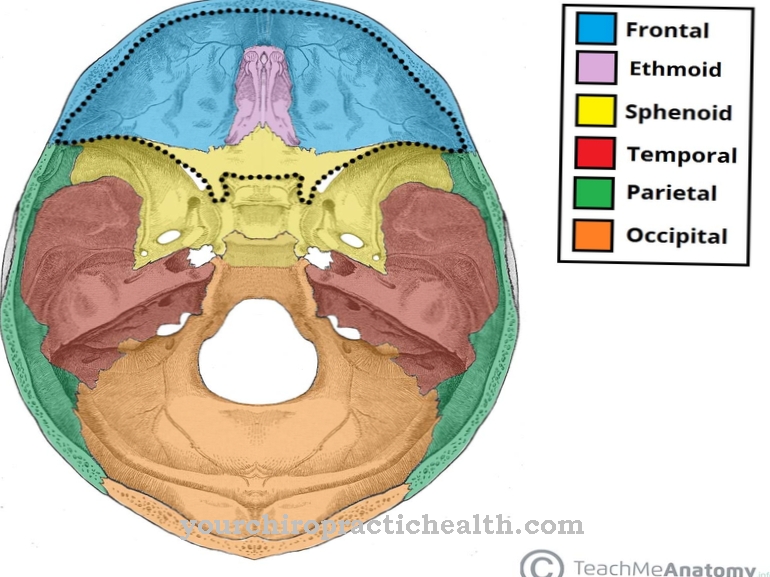The Pyramidal track is the longest nerve path in the body and transmits motor impulses from the first motor neuron in the brain to the second motor neuron in the spinal cord. It thus plays a major role in voluntary motor skills and is part of the pyramidal system. Damage to the pyramidal tract causes spastic and flaccid paralysis.
What is the pyramid orbit?
The pyramidal tract is part of the central nervous system and extends from the spinal cord to the brain. It is counted as part of the motor system. As an efferent pathway system to the motocortex, it transmits impulses from the central nervous system to the alpha motor neurons. From there, the action potentials are transmitted to the muscles of the skeletal muscles. This makes the pyramidal path an important control point for movements in voluntary and reflex motor skills.
The pyramidal orbit is also the longest descending orbit in the human nervous system and belongs to the pyramidal system. The motor neurons and their nerve processes that converge in the pyramidal tract are called the pyramidal system. The pyramidal system is particularly strong in humans and primates. Together with the extrapyramidal system, it controls all motor functions in the human organism. Many sources consider a clear separation of the two systems to be critical.
Anatomy & structure
In the broadest sense, the pyramid track consists of two different fiber tracks. The anatomical structure of the corticospinal tract meets the corticonuclear tract. Both pathways are motor nerve pathways of the central nervous system. The pyramidal tract rests against the lower myelencephalon on both sides and is recognizable there as a pyramidal longitudinal bulge. The so-called pyramid junction lies between the posterior brain and the spinal cord.
A large part of the neurites crosses at this point as the lateral corticospinal tract on the opposite side of the path. The anterior paramedian corticospinal tract consists of the remaining ten to 30 percent of neurites. This path runs in the anterior spinal cord and crosses in segments into the anterior horn of the spinal cord. A few lanes are not involved in the crossing. Because the corticonuclear tract is connected to the cranial nerve nuclei by individual fibers and therefore does not run through the pyramidal structure of the myelencephalon, it only belongs to the pyramidal tract in the broadest sense.
Function & tasks
The pyramidal tract is part of the somatomotor system of humans and most mammals. This anatomical structure controls the voluntary movement and thus the skeletal muscles that are responsible for these movements. The heart muscles are not controlled by somatomotor. It is under the control of an independent and involuntary system, also known as the autonomic nervous system.
It is not the somatomotor but the enteric nervous system that is responsible for controlling the digestive organs. As part of the somatomotor system, the pyramidal tract is primarily responsible for voluntary motor skills. It takes on this function specifically as part of the pyramidal motor structures, whereby the extrapyramidal motor system is also included in the somatomotor system. Not all movements in the human body are controlled arbitrarily. While voluntary motor skills depend on the pyramidal trajectory, the involuntary part of motor skills depends on the extrapyramidal system. In the pyramidal system, both voluntary motor skills and fine motor skills are controlled. The primary motor cortex of the cerebrum takes on important tasks in this context. The cell bodies of central motor neurons are anchored here.
Histologically, these cells are also referred to as pyramidal cells. The pyramidal system consists primarily of small pyramidal cells that come from the motor cortex. From the cerebral cortex, the axon fibers of the central motor neurons pass through the spinal cord and thus reach the lower motor neuron, which is located in the anterior horn of the spinal cord. Movement commands are passed on from the brain to the success organs via the first and second motor neurons. As alpha neurons, the upper and lower motor neurons transmit impulses particularly quickly. As the connecting pieces between the two motor neurons, the pyramidal tract is an irreplaceable part of motor skills.
You can find your medication here
➔ Medicines for paresthesia and circulatory disordersDiseases
In connection with lesions of the pyramidal tract, the term Babinski's group plays a clinical role. Symptoms from this group are also called pyramid orbit signs. These are motor reflex movements that are physiological in infants but have pathological value in adults. In the neurological reflex test, the neurologist checks his patients for pyramidal signs as standard, because they can be an indication of damage to the central motor neurons.
In addition to the diagnostic value of the pyramidal signs, they are also of prognostic value in diseases such as multiple sclerosis. Signs of the pyramidal tract and thus damage to the central motor neurons or the pyramidal tract can arise from inflammation as well as from degenerative processes or circulatory disorders. A lesion of the pyramidal tract inside the brain usually results in flaccid paralysis or impaired fine motor skills. The flaccid paralysis turns into a spastic paralysis with increased muscle tone over time. In this context, disturbed blood flow is the most common cause of damage.
In contrast, in degenerative diseases such as ALS, the motor nervous system breaks down. In contrast, inflammation in the brain and spinal cord is present in the autoimmune disease MS. If this inflammation affects the pyramidal tracts, the prognosis for the course of the disease is less favorable on average. Meanwhile, the presence of pyramid orbit signs is considered to be a rather unsafe diagnostic instrument. Nonetheless, it is still one of the few means of suspected diagnosis of motor neuronal damage to the nervous system.








.jpg)










.jpg)

.jpg)

.jpg)




